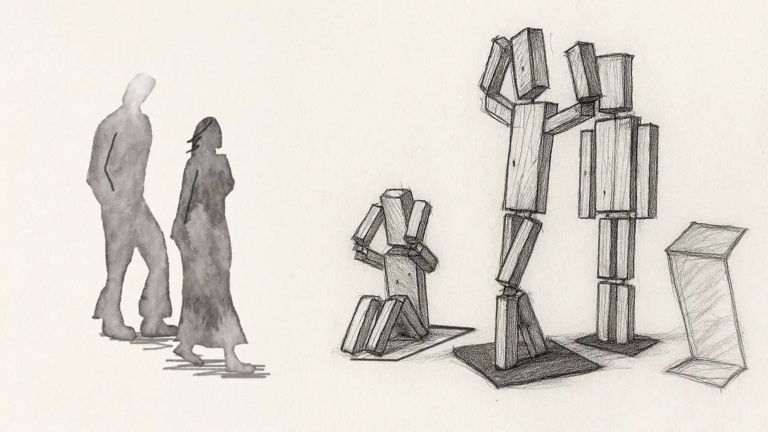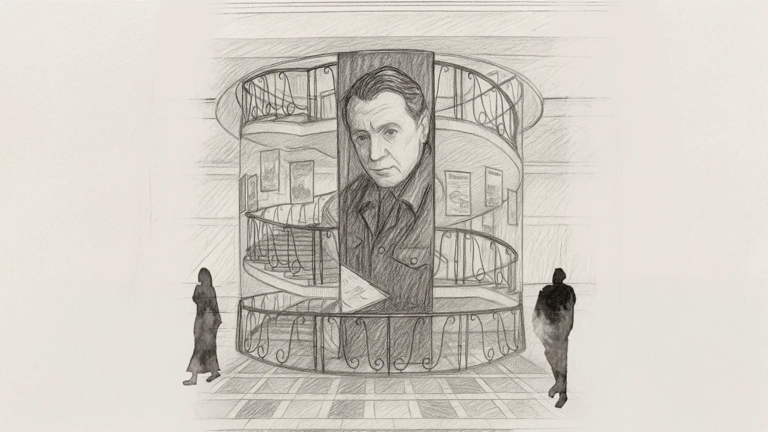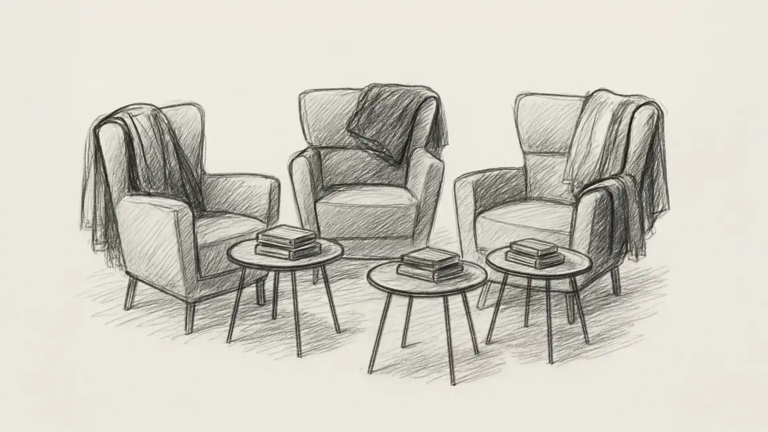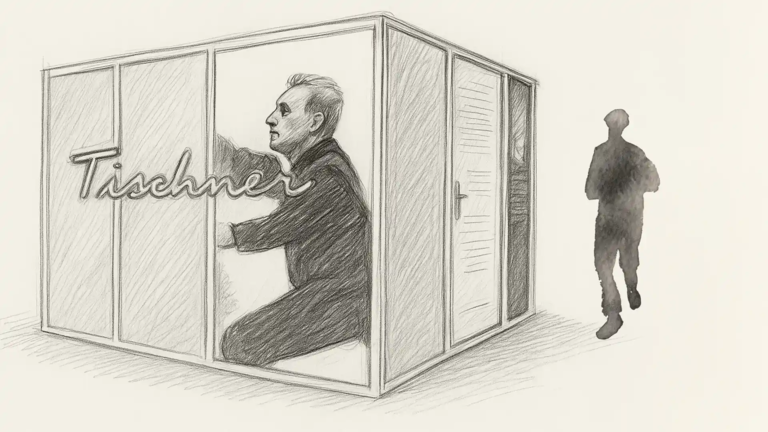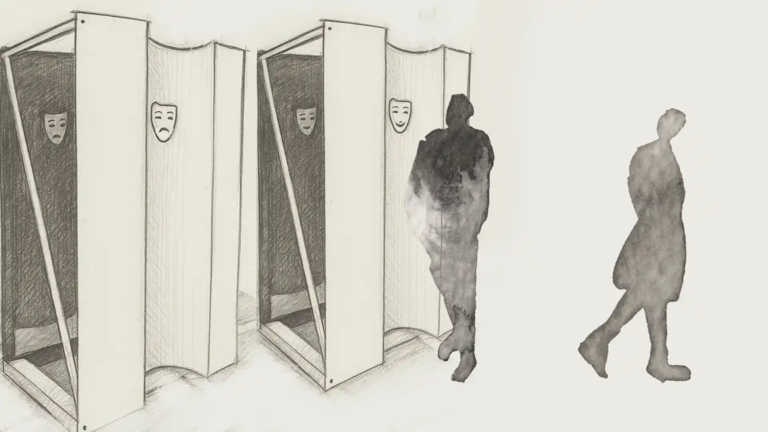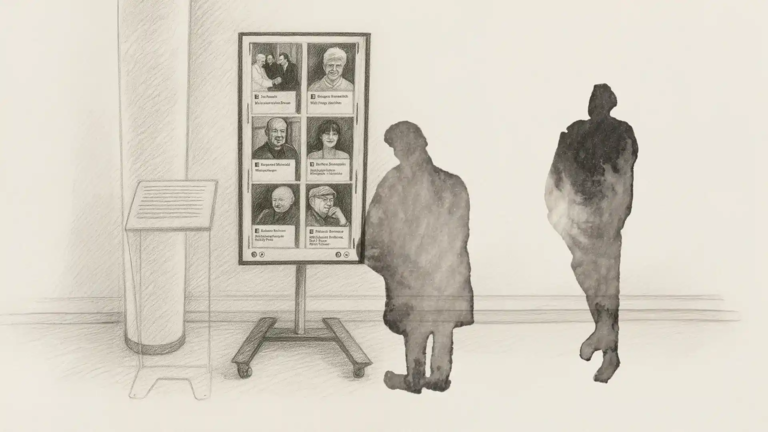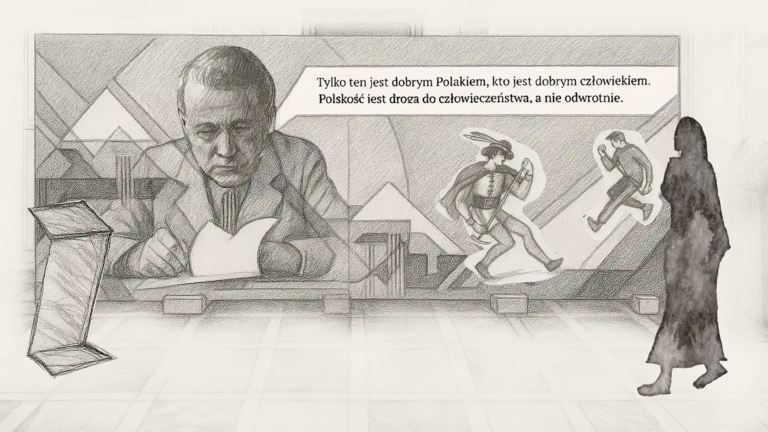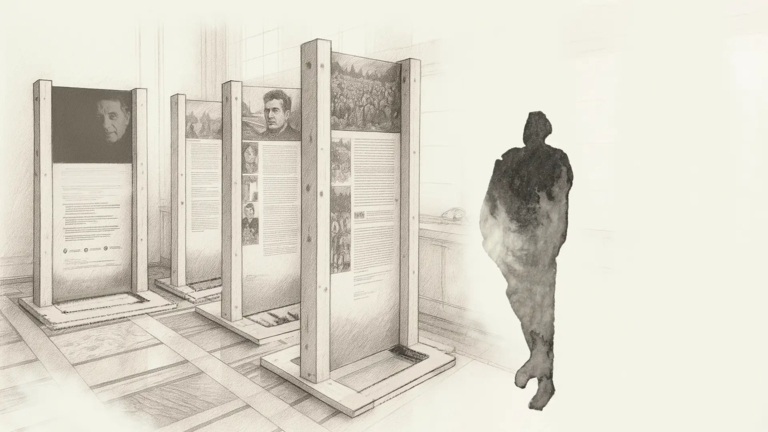A creative spatial visualization inspired by Józef Tischner’s Philosophy of Drama is constructed from wooden beams and metal, is deeply symbolic. The 230 cm tall characters, arranged in exaggerated gestures – of shouting, petrification, and resignation – express the fundamental aspects of human existence — full of contradictions and inner struggle. The wooden beams, connected by metal elements, reflect the harshness and rigidity of human fate, the entrapment within existence. The installation is set within a white circle, which serves as a metaphor for the theatrical stage – a space in which the daily drama of human life unfolds.
A fragment from The Philosophy of Drama, placed on the floor at the center of the figures, completes the intellectual context of the entire installation, inviting the viewer to reflect.
Around me and beside me there are people, especially those who are participants in the same drama, in which I myself am also a participant. Against widely held views, I do not see them, hear them, or touch them, nor do I perceive them. That is because, what I perceive is only an externality, and not man as man, the other as other. The other man as man can only appear before me when – not excluding all “externality” – he stands before me as a participant of my own drama. I cannot hear or see participation in a drama – it requires a completely different openness than the openness of intentional consciousness. The other stands before me through some claim, as a result of which a sense of obligation arises in me. The awareness of the fact that the other is present is completed by the consciousness of the claim – a claim that obligates. Your question reaches my ears. There is a moment of silence, a mutual moment of being present. You await an answer. An answer must be given. This must is significant. It is thanks to it and within it that you are present next to me.
Openness towards the Other is of a dialogical nature.
The installation will be illuminated to intensify its dramatic effect.
